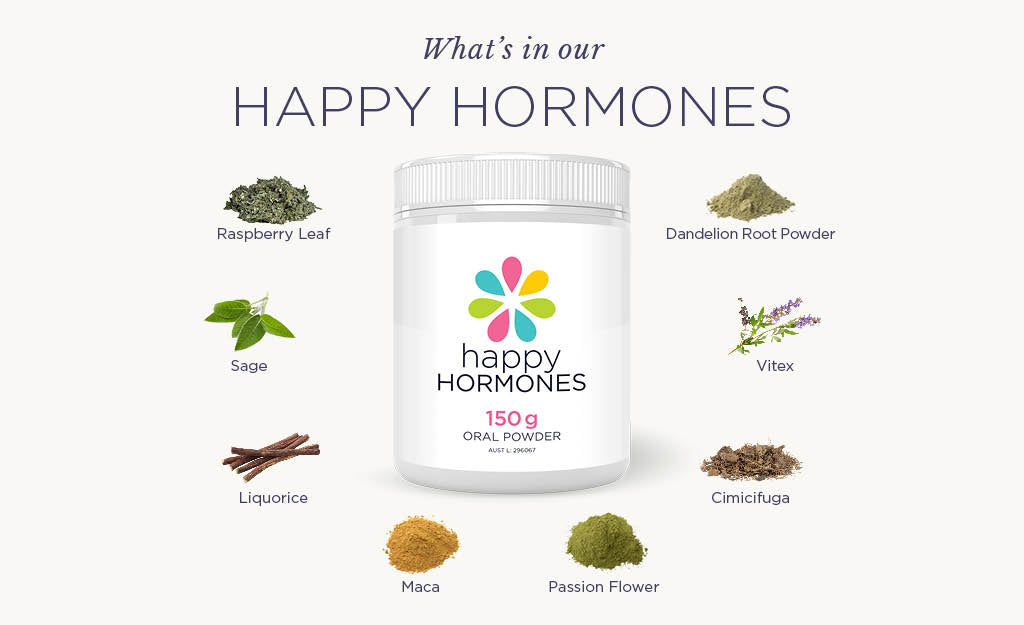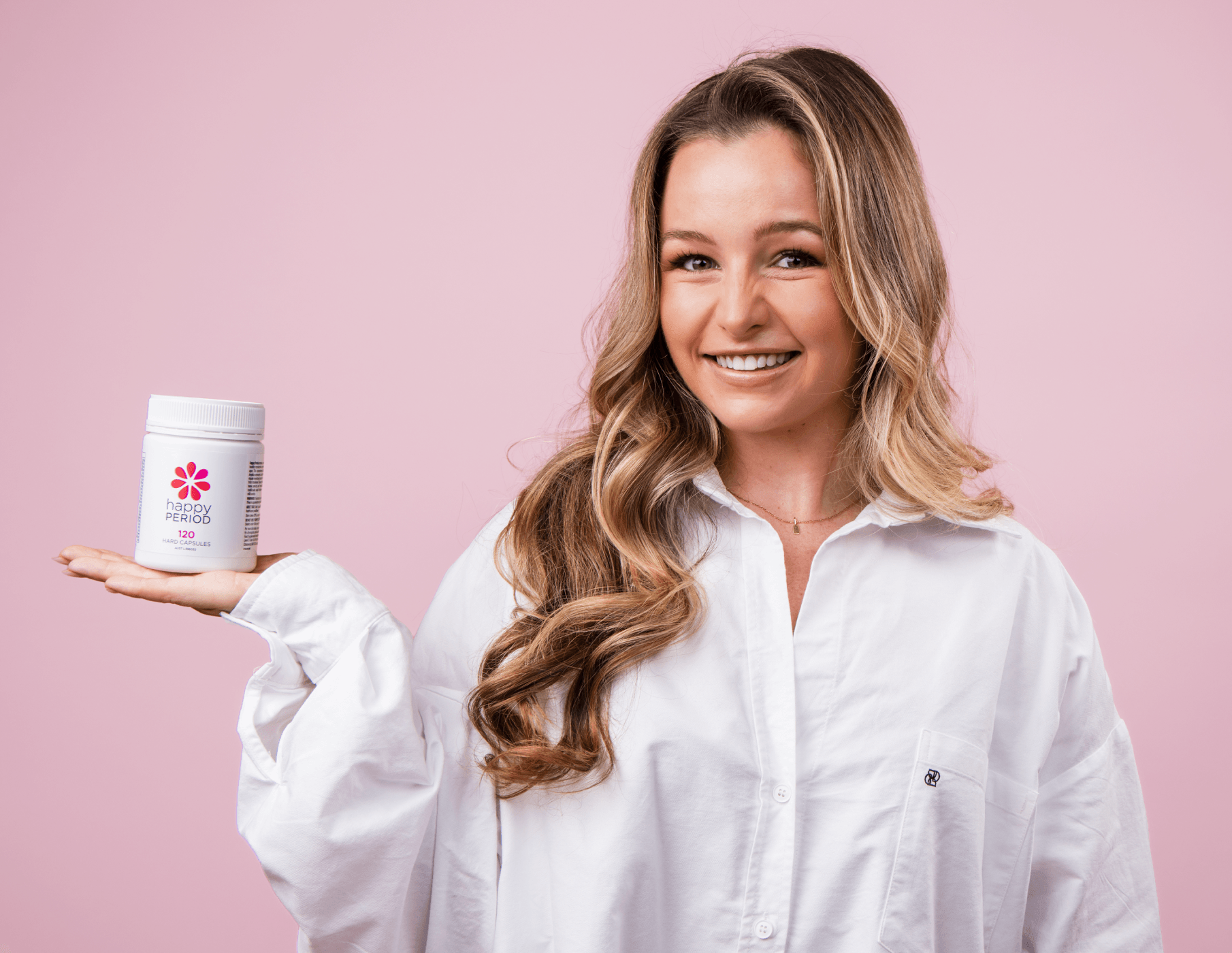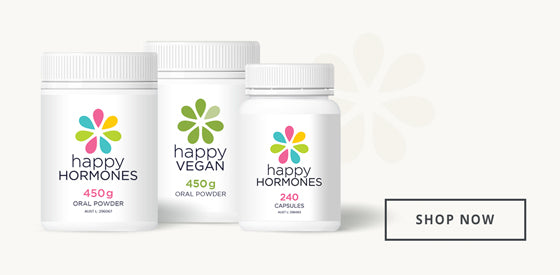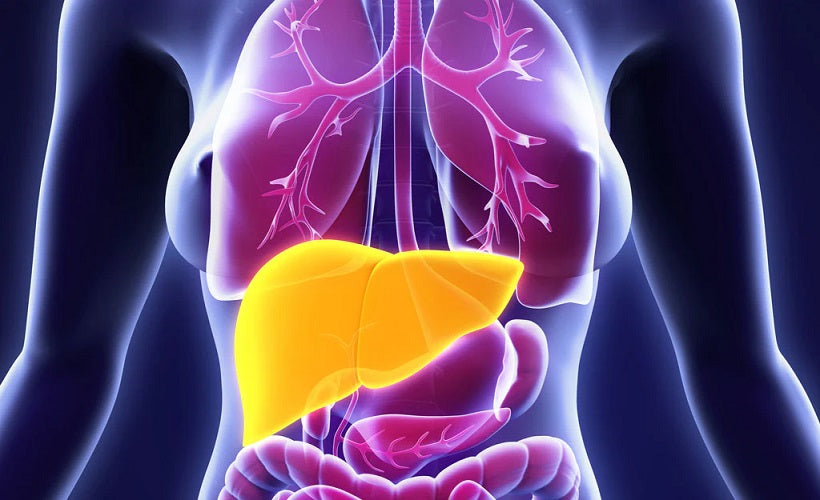How does Happy Hormones work?
By Jeff Butterworth

Happy Hormones is the result of over 25 years of treating hormonal conditions and observing reactions to different treatments. Through trial and error, I observed how women respond to different dietary and lifestyle changes, nutritional medicines and phytomedicines. Through experimentation, I understood that the whole body had to be taken into consideration, not just hormones.
Hormonal imbalances are a sign the body is not functioning as it should....so by optimising overall health and well-being....the greatest changes were observed in women.
Our approach is a system. It is not just Happy Hormones but a holistic approach that requires some changes in diet and lifestyle to get the best results. We like to change what has lead to the body becoming out of balance to begin.
The following diagram is of the body's own hormone control centre, the hypothalamus/pituitary axis which is where all major sex hormones are controlled in the body. It is a very complex system and the best way to assist the body is to allow the body to balance itself.

How the ingredients in Happy Hormones work together
Cimicifuga Racemosa – Black Cohosh

The benchmark in complementary medicines for regulating hormonal imbalance is an herbal medicine known as Cimicifuga Racemosa (Black Cohosh).
Numerous studies have proven Cimicifuga racemosa to be effective in hormonal complaints associated with premenstrual syndrome and menopause.
In one such study, Cimicifuga racemosa at a dose of 80mg per day was found to be effective in PMS, with freedom from symptoms in 84% of cases. This is a staggering percentage, considering the complex mechanisms of development for hormonal disorders. Cimicifuga is also well known for its ability to effectively treat menopausal symptoms, with dozens of clinical trials to substantiate the action. In fact, Cimicifuga is the most popular complementary medicine for the treatment of menopause, with millions of women worldwide benefiting from the hormonal regulatory effect.
Using the Hamilton Anxiety Scale (HAMA) Cimicifuga Racemosa was shown to improve nervousness and irritability by 86.5%, depressive moods by 82.5% and sleeping problems by 76.8%. Stolze, H: Gyne 1, 14-16 (1982)
Vitex Agnus Castus

Vitex, better known as the Chaste tree is a well-studied herbal medicine working primarily on female disorders.
Best known for its treatment of PMS, Chaste Tree has been shown to relieve symptoms of premenstrual tension and regulate a healthy menstrual cycle. It has also been shown to relieve symptoms of menopause.
Treatment of premenstrual syndrome with a phytopharmaceutical formulation containing Vitex agnus castus.
Authors: Loch EG(1), Selle H, Boblitz N.
Publication: J Womens Health Gend Based Med. 2000 Apr;9(3):315-20.
Raspberry leaf

Raspberry leaf has long been used by herbalists as a tonic for female disorders, particularly for the preparation of childbirth, through its action on improving the health and muscle tone of the uterus.
Maca

Maca is a relatively new discovery in the western herbal medicine, although it has been used as a health tonic in Peru for thousands of years.
Maca also has an action to improve sleep and menopausal disorders. Maca is also highly nutritive which is why it gets its name as a superfood. Rich in B vitamins and minerals Maca has a reputation as an aphrodisiac.
Beneficial effects of Lepidium meyenii (Maca) on psychological symptoms and measures of sexual dysfunction in postmenopausal women are not related to estrogen or androgen content.
Authors: Brooks NA(1), Wilcox G, Walker KZ, Ashton JF, Cox MB, Stojanovska L.
Publication: Menopause. 2008 Nov-Dec;15(6):1157-62.
Pubmed Data: DOI 10.1097/gme.0b013e3181732953.
Sage

Sage has traditionally been used for a wide variety of health conditions including digestive disorders, nervous conditions and infections due to its highly volatile oil content.
Specifically relating to hormonal conditions sage has been shown to relieve hot flushes associated with menopause.
Authors: S. Bommer, P. Klein, A. Suter
Publication: Adv Ther. 2011 Jun;28(6):490-500.
Pubmed Data: DOI 10.1007/s12325-011-0027-z. Epub 2011 May 16.
Gymnema

Gymnema is an herbal medicine that is often not thought of for hormonal disorders. However, it does have a powerful indirect effect on hormonal imbalance.
Gymnema has traditionally been used to assist in regulating blood sugar levels, which is often a symptom associated with hormonal symptoms.
https://www.ncbi.nlm.nih.gov/pmc/articles/PMC3912882/
Passionflower

Passionflower has a natural calming effect on the nervous system. Traditionally it has been shown to assist in improving sleep which is one of the reasons why I included it in the Happy Hormones formula.
A double-blind, placebo-controlled investigation of the effects of Passiflora incarnata (passionflower) herbal tea on subjective sleep quality.
Authors: Ngan A(1), Conduit R.
Publication: Phytother Res. 2011 Aug;25(8):1153-9.
Pubmed Data: DOI 10.1002/ptr.3400. Epub 2011 Feb 3.
Dandelion root

Very few doctors and naturopaths would ever consider using dandelion root for a hormonal condition. Yet it is an important inclusion in Happy Hormones.
Dandelion root is a has an influence on liver function and has been used traditionally as a liver tonic. The liver plays an important role in hormone metabolism and any improvement in liver function we find assists hormonal balance.
Many women also have a history of liver damage associated with excessive sugar intake so it is good practice to support the liver.
The diuretic effect in human subjects of an extract of Taraxacum officinale folium over a single day.
Authors: Clare BA(1), Conroy RS, Spelman K.
Publication: J Altern Complement Med. 2009 Aug;15(8):929-34.
Pubmed Data: DOI 10.1089/acm.2008.0152.
Wild Yam

Wild yam is a common herbal medicine used by many women. Most commonly it is used as an extract and added to creams which some women use externally. Through experience I find that it works better as an internal phytomedicine which we use in Happy Hormones.
Psyllium husk

Psyllium husk is a simple plant-based soluble fibre which improves digestive motility. In other words, it assists to improve bowel regularity.
Fibre also assists as a food source for healthy bacteria in the gut, which is important for hormonal function and breakdown.
Synergism
Finally, the formula is not just about the ingredients but the delicate balance of each. Herbal medicines can enhance the effect of the other when in the right combination.
So over many years, the levels of the ingredients have been adjusted to obtain the best possible activity of each, to work as a singular formula.
Summary
Happy Hormones will work on its own, through the mechanism of balancing hormones via the brain's control centre. However, you need to understand there are many reasons why this mechanism is out of balance, to begin with.
Most common reasons are stress, synthetic hormones, poor sleep, alcohol consumption, sugar intake, lack of exercise, and even childbirth, all contribute to an imbalance. So it's important to not disregard these elements as part of the healing and balancing process.
This is why we developed all the free supporting programs that go along with Happy Hormones to get the best results. The program assists to improve digestive and liver function, helping to improve hormone metabolism; and removes all the processed foods which can disrupt the endocrine balance.
As a starting point we strongly suggest taking our free online assessment. We will provide you with a comprehensive report to get started with Happy Hormones and all our advice.
If you would like to purchase Happy Hormones, please visit our store.

REFERENCES
Ruying Tang, Linyuan Wang, Aimin Li. Antianxiety and anti-depressant effects of Maca (L. meyenii) ethanolic extract on chronic unpredictable mild stress of rats through hypothalamic-pituitary-adrenal axis. SDRP Journal of Food Science & Technology. 2019. Vol 4:4.
http://www.openaccessjournals.siftdesk.org/articles/pdf/Antianxiety-and-anti-depressant-effects-of-Maca20190528011420.pdf
Alexander Panossian, Georg Wikman. Evidence-based efficacy of adaptogens in fatigue, and molecular mechanisms related to their stress-protective activity. Current Clinical Pharmacology. 2009. Sep;4(3):198-219.
https://doi.org/10.2174/157488409789375311
Pontus Karling, Mikael Wikgren, Rolf Adolfsson, and Karl-Fredrik Norrback. Hypothalamus-Pituitary-Adrenal Axis Hypersuppression Is Associated with Gastrointestinal Symptoms in Major Depression. Journal of Neurogastroenterology and Motility. 2016. 22(2): 292-303.
https://doi.org/10.5056/jnm15064








Leave a comment
This site is protected by hCaptcha and the hCaptcha Privacy Policy and Terms of Service apply.